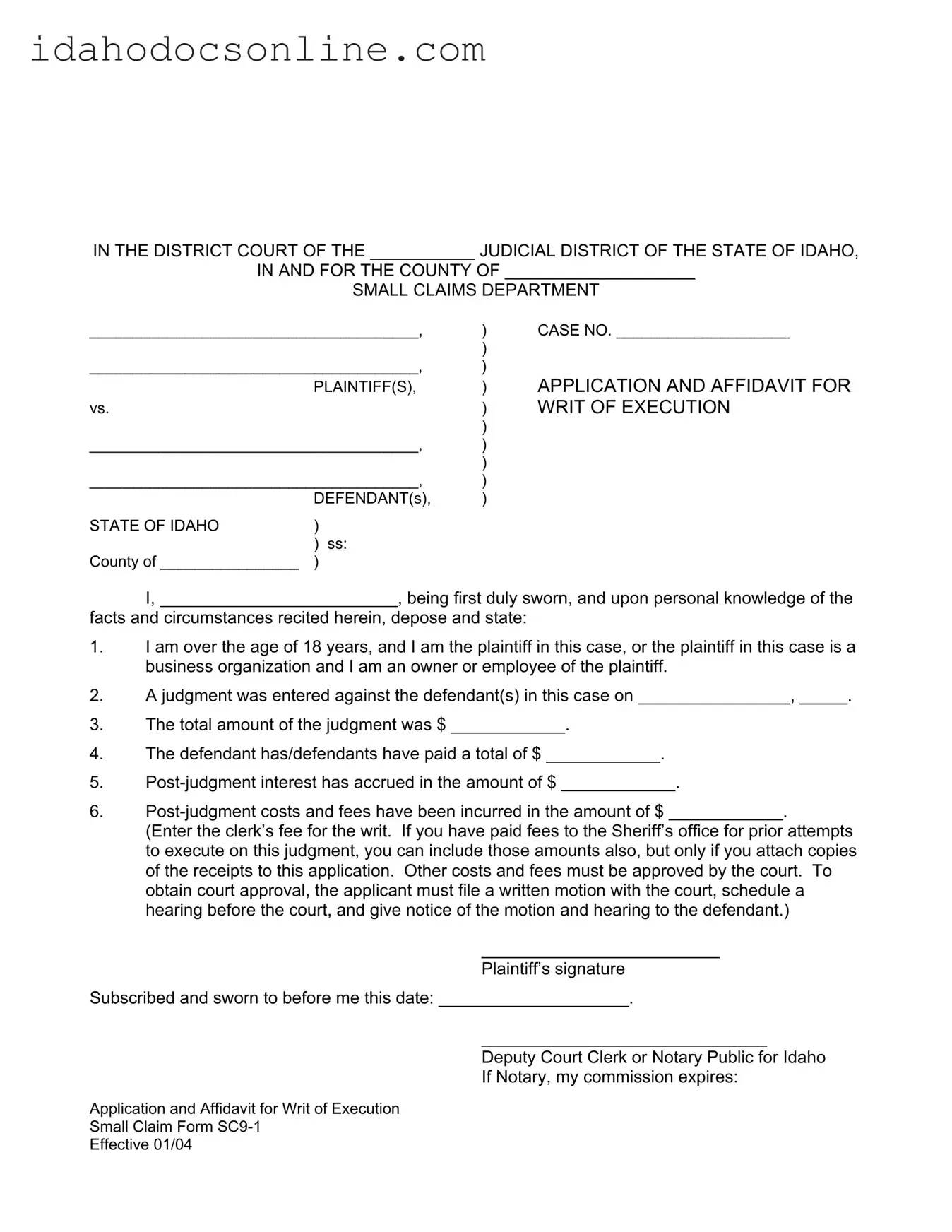IN THE DISTRICT COURT OF THE ___________ JUDICIAL DISTRICT OF THE STATE OF IDAHO,
IN AND FOR THE COUNTY OF ____________________
SMALL CLAIMS DEPARTMENT
______________________________________, |
) |
CASE NO. ____________________ |
|
|
) |
|
______________________________________, |
) |
|
|
PLAINTIFF(S), |
) |
APPLICATION AND AFFIDAVIT FOR |
vs. |
|
) |
WRIT OF EXECUTION |
|
|
) |
|
______________________________________, |
) |
|
|
|
) |
|
______________________________________, |
) |
|
|
DEFENDANT(s), |
) |
|
STATE OF IDAHO |
) |
|
|
)ss:
County of ________________ )
I, _________________________, being first duly sworn, and upon personal knowledge of the
facts and circumstances recited herein, depose and state:
1.I am over the age of 18 years, and I am the plaintiff in this case, or the plaintiff in this case is a business organization and I am an owner or employee of the plaintiff.
2.A judgment was entered against the defendant(s) in this case on ________________, _____.
3.The total amount of the judgment was $ ____________.
4.The defendant has/defendants have paid a total of $ ____________.
5.Post-judgment interest has accrued in the amount of $ ____________.
6.Post-judgment costs and fees have been incurred in the amount of $ ____________.
(Enter the clerk’s fee for the writ. If you have paid fees to the Sheriff’s office for prior attempts to execute on this judgment, you can include those amounts also, but only if you attach copies of the receipts to this application. Other costs and fees must be approved by the court. To obtain court approval, the applicant must file a written motion with the court, schedule a hearing before the court, and give notice of the motion and hearing to the defendant.)
_________________________
Plaintiff’s signature Subscribed and sworn to before me this date: ____________________.
______________________________
Deputy Court Clerk or Notary Public for Idaho If Notary, my commission expires:
Application and Affidavit for Writ of Execution
Small Claim Form SC9-1
Effective 01/04
